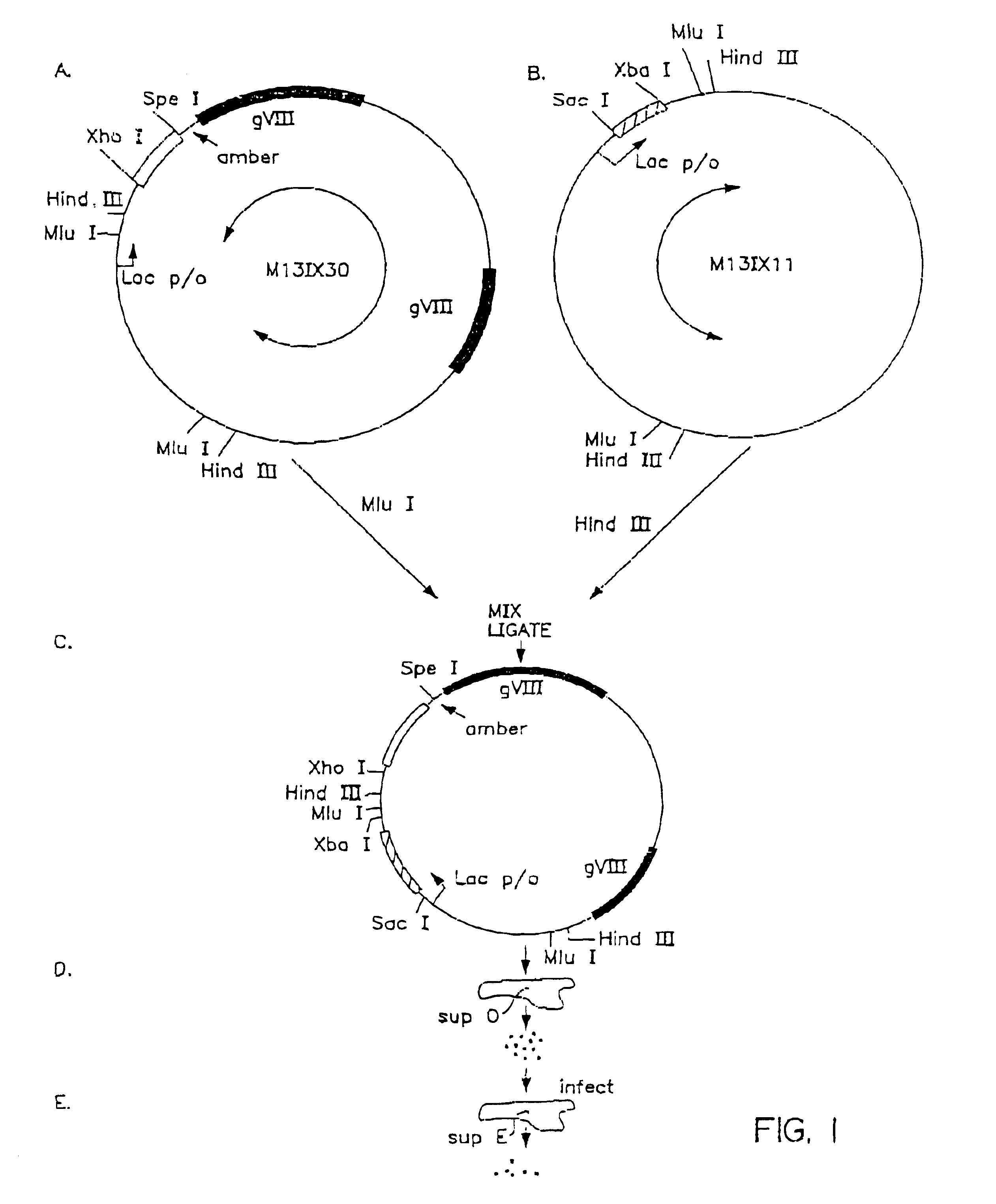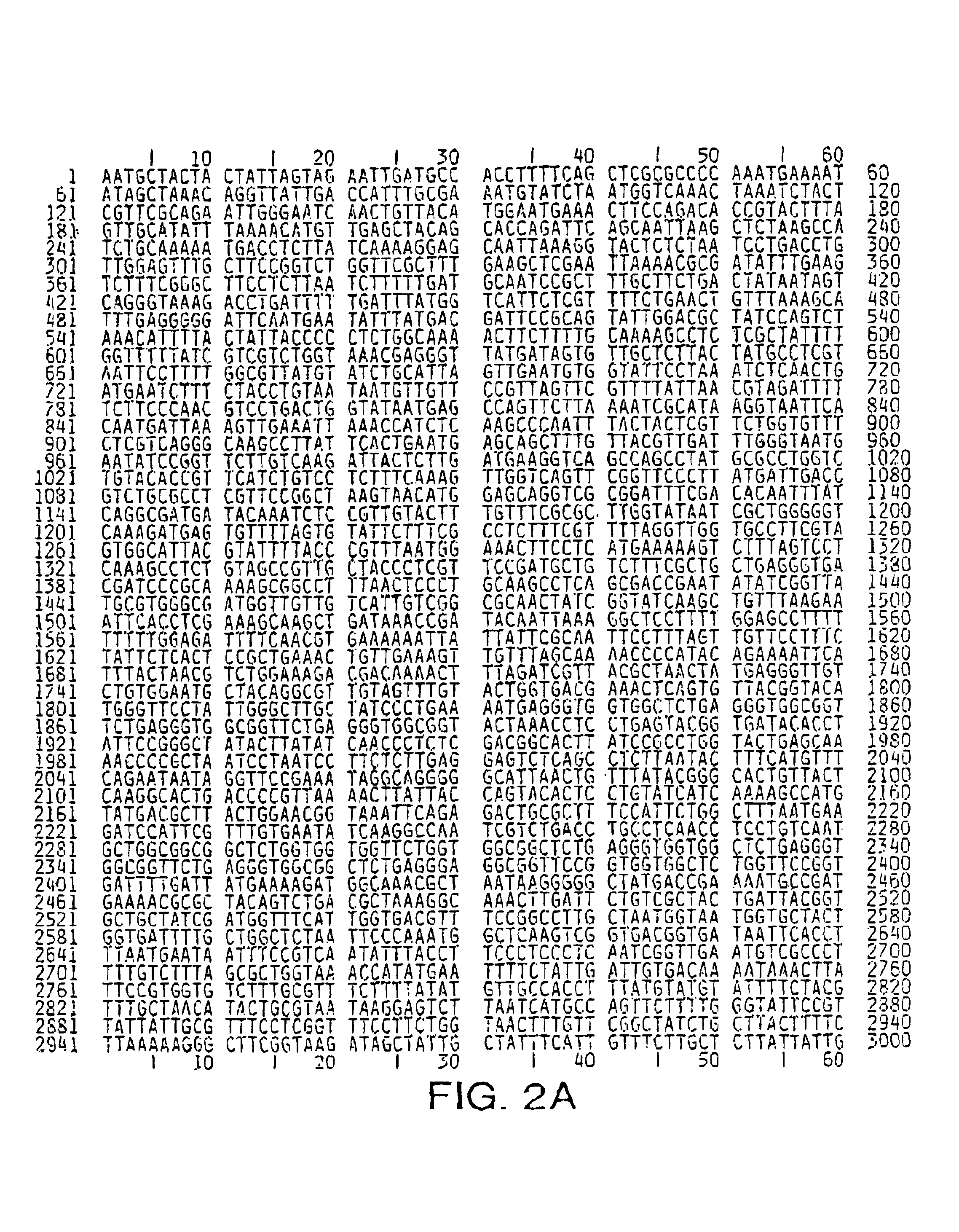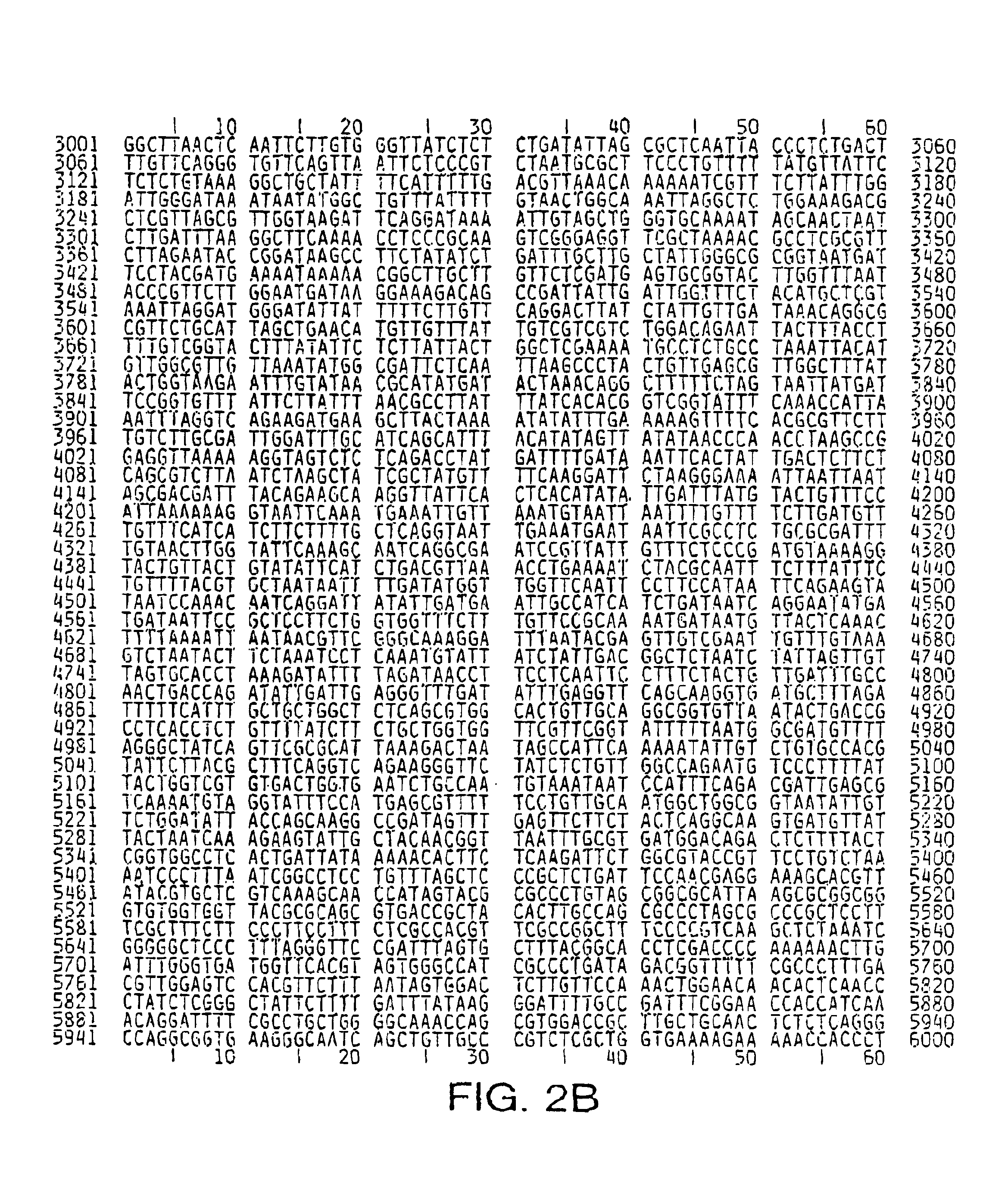Surface expression libraries of heteromeric receptors
a surface expression and receptor technology, applied in the field of recombinant expression of heteromeric receptors, can solve the problems of significant loss of sequences from the population, laborious and time-consuming monoclonal antibody generation, and unfavorable human developmen
- Summary
- Abstract
- Description
- Claims
- Application Information
AI Technical Summary
Problems solved by technology
Method used
Image
Examples
example i
Construction, Expression and Screening of Antibody Fragments on the Surface of M13
[0037]This example shows the synthesis of a diverse population of heavy (Hc) and light (Lc) chain antibody fragments and their expression on the surface of M13 as gene VIII-Fab fusion proteins. The expressed antibodies derive from the random mixing and coexpression of a Hc and Lc pair. Also demonstrated is the isolation and characterization of the expressed Fab fragments which bind benzodiazapam (BDP) and their corresponding nucleotide sequence.
Isolation of mRNA and PCR Anplification of Antibody Fragments
[0038]The surface expression library is constructed from mRNA isolated from a mouse that had been immunized with KLH-coupled benzodiazapam (BDP). BDP was coupled to keyhole limpet hemocyanin (KLH) using the techniques described in Antibodies: A Laboratory Manual, Harlow and Lane, eds., Cold Spring Harbor, N.Y. (1988), which is incorporated herein by reference. Briefly, 10.0 milligrams (mg) of keyhole l...
example ii
Cloning of Heavy and Light Chain Sequences Without Restriction Enzyme Digestion
[0082]This example shows the simultaneous incorporation of antibody heavy and light chain fragment encoding sequences into a M13IXHL-type vector without use of restriction endonucleases.
[0083]For the simultaneous incorporation of heavy and light chain encoding sequences into a single coexpression vector, a M13IXHL vector was produced that contained heavy and light chain encoding sequences for a mouse monoclonal antibody (DAN-18H4; Biosite, San Diego, Calif.). The inserted antibody fragment sequences are used as complementary sequences for the hybridization and incorporation of Hc and Lc sequences by site-directed mutagenesis. The genes encoding the heavy and light chain polypeptides were inserted into M13IX30 (SEQ ID NO: 1) and M13IX11 (SEQ ID NO: 2), respectively, and combined into a single surface expression vector as described in Example I. The resultant M13IXHL-type vector is termed M13IX50.
[0084]The ...
PUM
 Login to View More
Login to View More Abstract
Description
Claims
Application Information
 Login to View More
Login to View More - R&D
- Intellectual Property
- Life Sciences
- Materials
- Tech Scout
- Unparalleled Data Quality
- Higher Quality Content
- 60% Fewer Hallucinations
Browse by: Latest US Patents, China's latest patents, Technical Efficacy Thesaurus, Application Domain, Technology Topic, Popular Technical Reports.
© 2025 PatSnap. All rights reserved.Legal|Privacy policy|Modern Slavery Act Transparency Statement|Sitemap|About US| Contact US: help@patsnap.com



